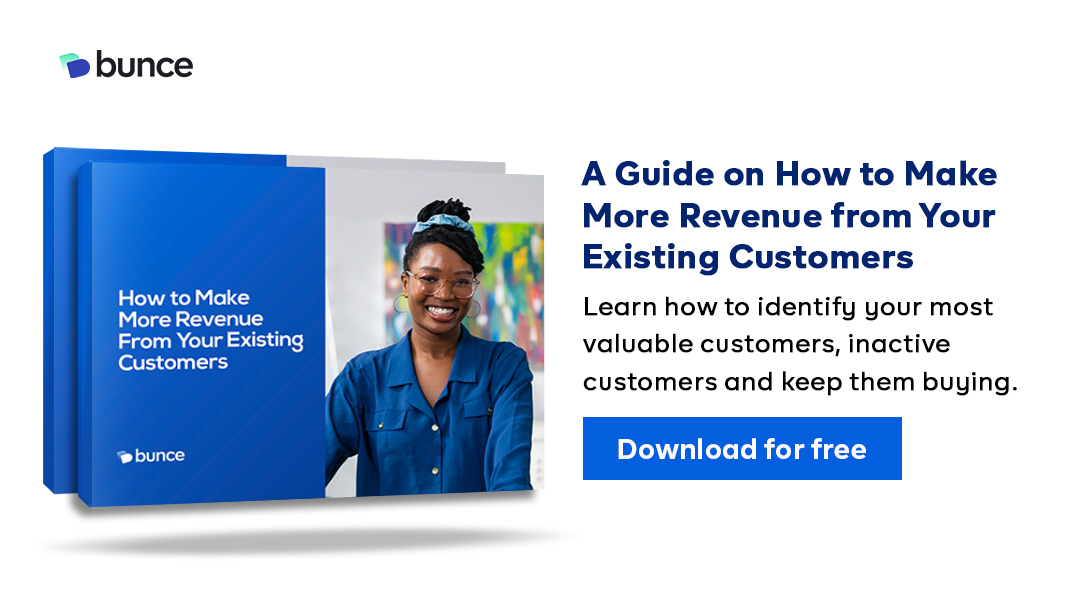Most businesses don’t live up to their fifth year. One of the major reasons is the inability of these businesses to generate revenue for their continuous operation. It’s tiring to keep investing time, manpower, money and hope into a business that doesn’t make profit.
This poses the question of an effective strategy—what if businesses reviewed their operation from being sales-led to being customer-led. Simply put, would putting the customer first impact revenue and longevity differently
Businesses don’t exist to make money. Businesses exist to create value which then brings an increase in customer lifetime value and revenue.
That’s a profound statement by Dr. Deva Rangarajan on the CSM practice podcast on customer value management. And true to this statement, value builds the bridge for customers to buy from you.
But how do you ensure your bridge isn’t falling off anytime soon, disconnecting customers from ever returning?
In this e-book, we show you how to attract customers and keep them coming back to buy from you. This is the idea of customer retention. We also provide a guide on how to do this by analysing your customer payment data.
Get our free resource
A guide on how to make more revenue from your existing customers.
CHAPTER 1
Nurturing and Retaining Existing Customer
Trust is important in every relationship. Without it, the next offense can trigger a breakup.
Let’s be real, your products or services may not always deliver the best experience to every customer. Some may encounter a glitch while others may not meet customer expectations. But there are factors that serve as compensation to the customer which can sustain customer retention and stir product advocacy.
These factors not only nurture customers but allows them to give the benefit of the doubt to brands.
When a business earns its customer’s trust, churn rate (the number of customers who quit doing business with you) will be minimal and customer retention rates (how long they stay with your business) will increase. This will in turn influence customer lifetime value (CLV) I.e, the worth (in currency) of a customer over the period of time they keep doing business with you. This CLV is a key metric every business should track.
Some of the factors that build customer trust are quality communication, good customer service and customer experience, fair pricing, a great product that is easy to use, customer rewards and loyalty programs.
When it concerns quality communication, there are other factors to consider to better understand the customer. They include:
- The unique journey each customer is on; are they free trial users, people who signed up but haven’t used the product, or people who used the product once and haven’t used it after then?
- The kind of help they need and
- How they would love to be helped.
These cases and many more make it important to identify and create unique customer segments or groups that enable effective communication— offering value to each customer.
Research shows that based on brand recognition and trust, it will cost an average business seven times more to sell to new customers than to old customers. So it’s wise to invest in strategies that will help you retain your existing customers.
Ash Maurya, Founder of LeanStack said, “While getting paid is the first validation, getting customers to keep coming back is the ultimate validation to building a repeatable and scalable business.”
This is true as there is no business growth if you can’t retain current customers.
A good return on investment for nurturing existing customers is that they contribute to bringing new customers (fueling your acquisition pipeline) through referrals. After all, happy customers will always recommend the product to their friends and family and there’s stats to prove it. When users have a good customer experience, they’ll most likely recommend your brand to at least 6 friends.
So nurturing existing customers and adapting customer retention strategies is a win-win situation that lowers your customer acquisition cost; the money and time spent in acquiring new customers.
The focus of this e-book is to help marketing managers effectively use customer data to understand their customer needs, segment them into groups, and to communicate to customers in a personal way that meets their specific needs.
In the next chapters, you’ll learn strategies on how to:
- Identify and segment your customers
- Personalise the Customer Journey
- How Bunce can help you retain customers
Building customer relationships and earning customer trust is the new business currency. You need to figure out who your customers are and how best to communicate with them to positively influence factors like customer retention, customer lifetime value, product advocacy, and business revenue.
Our aim is to show you how your business can achieve this. Download this e-book for free.

